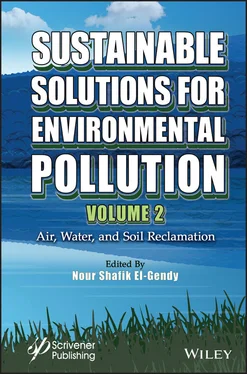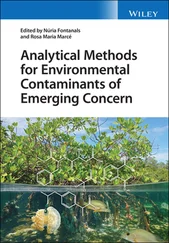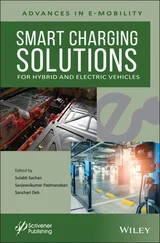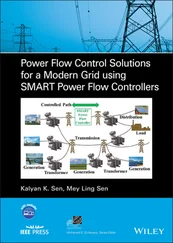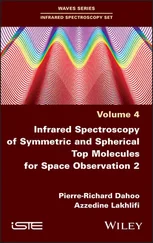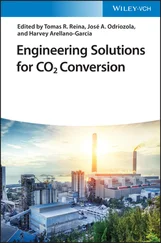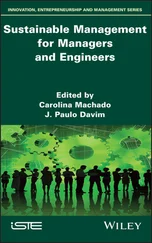Sustainable Solutions for Environmental Pollution, Volume 2
Здесь есть возможность читать онлайн «Sustainable Solutions for Environmental Pollution, Volume 2» — ознакомительный отрывок электронной книги совершенно бесплатно, а после прочтения отрывка купить полную версию. В некоторых случаях можно слушать аудио, скачать через торрент в формате fb2 и присутствует краткое содержание. Жанр: unrecognised, на английском языке. Описание произведения, (предисловие) а так же отзывы посетителей доступны на портале библиотеки ЛибКат.
- Название:Sustainable Solutions for Environmental Pollution, Volume 2
- Автор:
- Жанр:
- Год:неизвестен
- ISBN:нет данных
- Рейтинг книги:3 / 5. Голосов: 1
-
Избранное:Добавить в избранное
- Отзывы:
-
Ваша оценка:
- 60
- 1
- 2
- 3
- 4
- 5
Sustainable Solutions for Environmental Pollution, Volume 2: краткое содержание, описание и аннотация
Предлагаем к чтению аннотацию, описание, краткое содержание или предисловие (зависит от того, что написал сам автор книги «Sustainable Solutions for Environmental Pollution, Volume 2»). Если вы не нашли необходимую информацию о книге — напишите в комментариях, мы постараемся отыскать её.
This second volume in a broad, comprehensive two-volume set, “Sustainable Solutions for Environmental Pollution”, concentrates on air, water, and soil reclamation, some of the biggest challenges facing environmental engineers and scientists today.
AUDIENCE: Sustainable Solutions for Environmental Pollution,
Sustainable Solutions for Environmental Pollution, Volume 2 — читать онлайн ознакомительный отрывок
Ниже представлен текст книги, разбитый по страницам. Система сохранения места последней прочитанной страницы, позволяет с удобством читать онлайн бесплатно книгу «Sustainable Solutions for Environmental Pollution, Volume 2», без необходимости каждый раз заново искать на чём Вы остановились. Поставьте закладку, и сможете в любой момент перейти на страницу, на которой закончили чтение.
Интервал:
Закладка:
4 Bio-augmentation consists of adding microbes to polluted water body to increase the biodegradation of contaminants. Bio-augmentation is possible when the biostimulation fails to meet the objectives, for example, when the indigenous microbes do not have the metabolic capability (gene pool) to degrade the contaminants, or when the contaminant is present at concentrations toxic to the indigenous microbes. Inoculated microbes may be derived from a selection, from a contaminated site, of microbes suited to the contaminant degradation, their lab enrichment, before inoculation on the contaminated site (Hussain et al., 2018). Obviously, on-site bio-augmentation prohibits the use of genetically modified organisms and introducing of recombinant microbial strains in natural environment in field applications. Bio-augmentation makes use of indigenous microbe strains such as microalgae, bacteria, and fungi. Addition of microbial cultures to accelerate biodegradation rate of pollutants. Microorganisms are sampled from contaminated sites where they are already capable of degrading some specific pollutants, depending on the pollutants contaminating the origin site. However, on-site application of bio-augmentation can pose problems of predation, nutritional competition between native and inoculated bacteria, too low inoculations, or ecological balance disturbance due to too large quantities inoculated.
1.10.2 Floating Treatment Constructed Wetlands
FT-CWs use natural water macrophytes on buoyant mats to increase the efficiency of FSF-CWs. The large root surfaces available for habitat for microbial growth and development lead to an efficient removal of pollutants from the water (Colares et al. , 2020). Their main function is to remove nutrients (such as N and P) and OM from the water column and thus remedy the eutrophication of waterbodies. FT-CWs are built on the principle of removing unwanted nutrients but do so without the soil compound and roots are directly immersed in the water column (Pavlineri et al. , 2017; Rehman et al. , 2019).
For instance, yellow iris Iris pseudacorus was planted to remove N from the secondary effluent in three tanks, with or without the addition of an electron donor (acetate or thiosulfate), in order to study heterotrophic and autotrophic denitrification. N totremoval rates were around 89.4% in autotrophic tank and 88.5% in heterotrophic tank, for a HRT of 1 day in summer. The autotrophic tank showed better nitrification and denitrification rates. The addition of electron donors effectively reduced N 2O emissions, particularly in summer and autumn, and they distinctly induced microbial population shift. Dechloromonas , Thiobacillus , and Nitrospira became the predominant genera in heterotrophic, autotrophic and control tanks respectively (Gao et al. , 2017). In a small-scale setup (600 inhabitants), a floating mat planted with Typha domingensis and applied to the raw sewage treatment for 12 months, removed in average 55% of COD, 56% of BOD 5, and 78% of TSS. Reduction rates were 41% for Kjeldahl nitrogen (N kj) and 37% for P tot. Anaerobic condition measured in effluent could explain the low reduction rates (Benvenuti et al. , 2018). Comparative pilot trials with pickerel rush Pontederia cordata and soft rush Juncus effusus showed a greater efficiency of P. cordata for N totand P tot, with highest removal rates of N tot(0.31mg/(L day) and P tot(0.34mg/(L day) (Chanc et al. , 2019). Afzal et al. (2019) used a full-scale (1,858 m 2) FT-CW made of 120 coconut mats, on polyethylene rafts, planted with Brachiaria mutica , Canna indica , Leptochloa fusca , P. australis , Rosa indica , T. domingensis , and set up in stabilization ponds receiving 60% sewage and 40% industrial (textiles, food, and chemicals) wastewater. The maximum removal capacities of the system were 79% of COD, 88% of BOD, and 65% of TDS (Afzal et al. , 2019).
Almost all the publications are dealing with bench or pilot scale trials, with very few working on a real scale. Therefore, one of the main challenges for FT-CWs is to move from pilot scale to a more realistic scale, in order to assess the behaviour of macrophytes and floating mats, in more “rugged” environments to study problems such as death of macrophytes, deformation and/or sinking of floating mats, and protection against plant predators (e.g., swans and ducks).
Characteristics that influence the effectiveness of FT-CWs are water depth, aquatic vegetation chosen, harvesting or maintenance of aquatic plants, presence of aeration in primary treatment, and seasonal fluctuations in temperature (Pavlineri et al. , 2017; Prajapati et al., 2017; Shahid et al. , 2018). Initially, natural FT-CWs were used to treat wastewater (Shahid et al. , 2018). The application of FT-CWs has become more common in recent years, with the first applications in lakes and rivers in Germany and Japan (Shahid et al. , 2018). Since then FT-CWs has become more broadly adopted, such as in the treatment of domestic and mine wastewater, agricultural and storm water runoff, eutrophic water bodies (Pavlineri et al. , 2017; Shahid et al. , 2018). Applications to improve water quality can be to introduce FT-CWs into various effluent treatment plants (domestic, agricultural, industrial, and mining) (Pavlineri et al. , 2017; Prajapati et al. , 2017).
1.10.3 Electro-Bioremediation
Recent developments in electro-microbiology are paving the way for new technologies to improve bioremediation processes without the addition of any chemicals in polluted aquatic environments to be treated. Moreover, electro-bioremediation makes it possible to obtain direct degradation products through electrochemical management of microbial consortium and to control greenhouse gases (GHG) or other noxious gas emissions (Namour and Jobin, 2018).
Our definition of electro-bioremediation excludes the electrokinetic (EK) techniques (Reddy and Cameselle, 2009; Barba et al. , 2018; Kaushal et al. , 2020). EK is mainly aiming at extracting pollutants after transport over long distances in an electric field. But the application of weak electric fields can have a negative effect on the pollutant-degrading biofilm, electrolyze the pore water, cause pH changes at the cathode, and produce reactive oxygen or chlorine species with antimicrobial effects near the anode (Liu et al. , 1997).
Our definition of electro-bioremediation only deals with techniques based on the microbial property to transfer electrons (to breath) to solid surfaces (anode) according to various transfer mechanisms (Lovley, 2012; Malvankar and Lovley, 2014; Santoro et al. , 2017). The transfer mechanisms can be chained, so the electron will be transported to the anode surface along a chain of microbial chemical shuttles and conductive nanowires. The anodic surface acts as an inexhaustible TEA for the bacteria near the anode, improving their breathing and thus the oxidation of OM and associated contaminants. Some technologies use the cathode to directly inject electrons for the clean-up of halogenated solvents (Aulenta et al. , 2009), nitrate (Virdis et al. , 2010), in recalcitrant wastes (Huang et al. , 2011).
In electro-bioremediation, instead of optimizing the collection of as many electrons as possible or injecting energy to catalyze the degradation of pollutants, electron flows are regulated via an external resistance control in order to maintain an anodic microbial consortium in optimal conditions for the biodegradation of OM. The maximal potential difference between oxygenated superficial water and anoxic sediments generally reaches approximately 800 mV (Ryckelynck et al. , 2005; Donovan et al. , 2008; Zhang et al. , 2011; Yang et al. , 2015; Gonzalez-Gamboa et al. , 2017). The greater the TEA potential difference, the higher the energy gain for the bacteria. The external resistance is therefore the relevant parameter to control the performance of the anode biofilm (Ren et al ., 2011). A proper anodic potential poised between 0 and 100 mV (NHE) can both enhances OM oxidation (bioremediation enhancement) and cuts noxious gas production (H 2S, CH 4, and N 2O) generated at lower potentials (Jeon et al. , 2012). Indeed, electro-bacteria competing with methanogens for OM have half-saturation coefficients lower than methanogens: e.g., Geobacter sulfurreducens : 10μM (Esteve-Nunez et al. , 2005) versus Methanosaetaceae : 169μM and Methanosarcinaceae : 3.4mM (Qu et al. , 2009). Electrobioremediation stimulates OM removal without chemical or energy inputs, so the operational cost can be significantly lower with other remedial methods. But it is able to lead to higher treatment efficiencies than other bioremediation technologies (Logan et al. , 2006; Huang et al. , 2011; Wang and Ren, 2013).
Читать дальшеИнтервал:
Закладка:
Похожие книги на «Sustainable Solutions for Environmental Pollution, Volume 2»
Представляем Вашему вниманию похожие книги на «Sustainable Solutions for Environmental Pollution, Volume 2» списком для выбора. Мы отобрали схожую по названию и смыслу литературу в надежде предоставить читателям больше вариантов отыскать новые, интересные, ещё непрочитанные произведения.
Обсуждение, отзывы о книге «Sustainable Solutions for Environmental Pollution, Volume 2» и просто собственные мнения читателей. Оставьте ваши комментарии, напишите, что Вы думаете о произведении, его смысле или главных героях. Укажите что конкретно понравилось, а что нет, и почему Вы так считаете.
